Have you ever wondered how butterflies survive the cold snows and bitter winds of winter? Most people are familiar with the amazing, long migration of the Monarch butterflies to Mexico to escape the cold, but many species of butterflies hunker down for the winter in your backyard. “The great majority of butterflies stay where they are. They spend the winter where they spend the summer,” says Jeffrey Glassberg, biologist, author and president of the North American Butterfly Association.
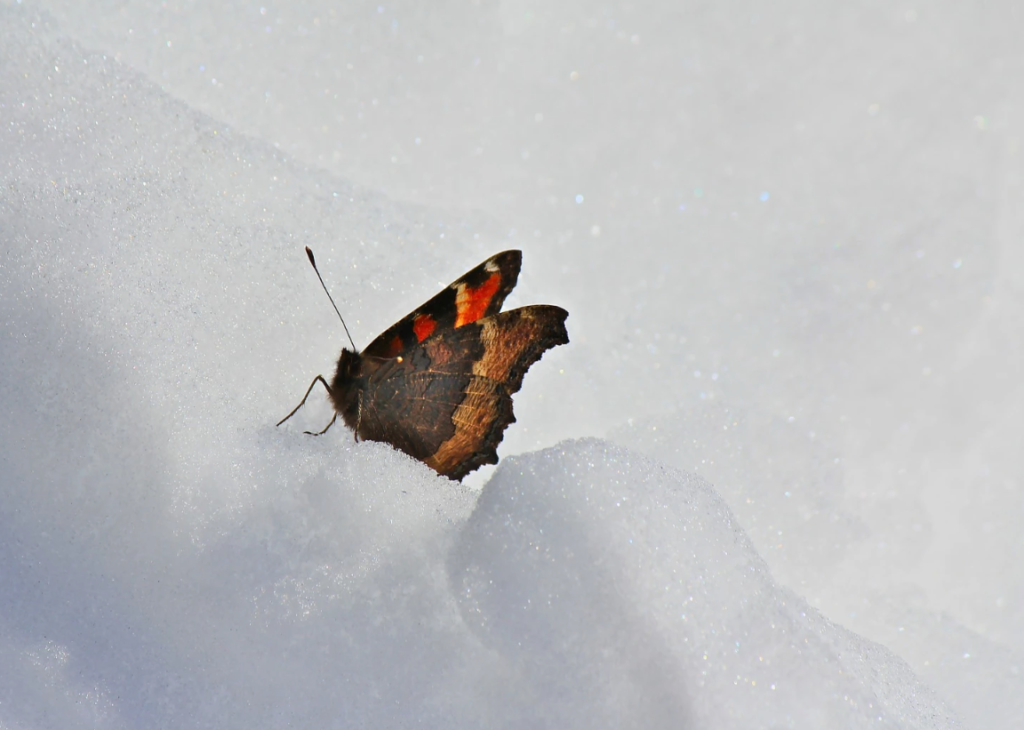
Among the approximately 700 species of North American butterflies there are three main strategies that have evolved for winter survival. The first involves diapause, either as an egg, a caterpillar, or as a chrysalis. Hibernation in the adult form is the second strategy. The third and final solution is simply to head south.
Most butterflies spend the winter months in a condition called diapause. Diapause is a period of suspended growth or development at a particular stage in the life cycle, to protect butterflies from long periods of inclement weather. Onset of diapause is stimulated by reduced daylight hours. Each species that enters diapause will do so in a different life stage: egg, larva, pupa, or adult.
Many species spend the winter as caterpillars such as the Tawny Emperor, Hackberry Emperor, Viceroy, Red-spotted Purple, and many other species. They create a nest out of leaves and wait until spring to emerge. These nests are called hibernacula (singular = hibernaculum). When spring arrives with longer days and new leaves on their trees, they emerge and begin eating and growing again.
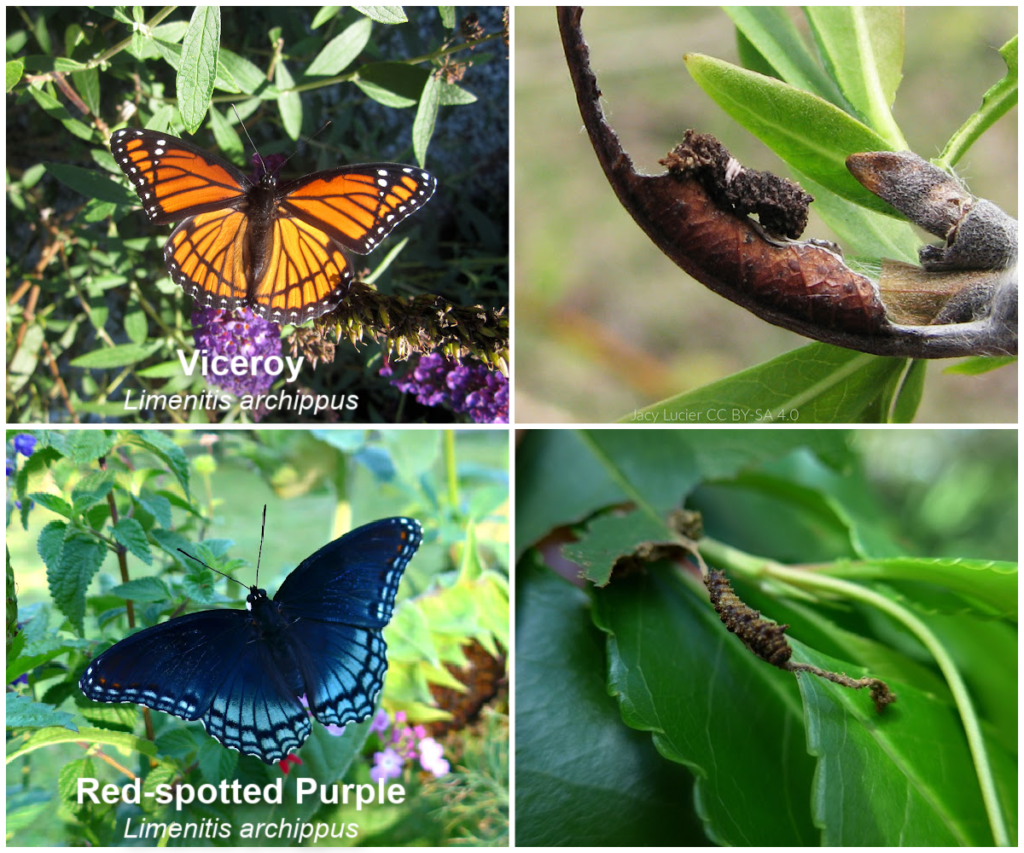
In the winter, the trees will drop their leaves. Caterpillars that overwinter will instinctively first sew their chosen leaves to the twig. Some species simply sew several leaves together or fold one leaf and stay inside during the winter. Some species, such as Tawny Emperors, will change color from green to brown inside their hibernaculum. Brown caterpillars inside brown leaves would be extremely difficult to see.

Swallowtail butterflies spend the winter as chrysalides. Just before they pupate, the longer nights and cooler temperatures will trigger the caterpillar to become a chrysalis and go into diapause. When it starts to warm up in the spring, the swallowtail will emerge from the chrysalis.
Butterflies who spend the winter in chrysalis find a sheltered place like overhangs or deep shrubbery. The chrysalis, like the adult and caterpillar, stops development over the winter months and contains special chemicals to keep from freezing. When the warmer weather returns and the days lengthen, development resumes in the chrysalis and the adult butterfly emerges in time for fresh blooms on nectar plants.

Perhaps the most vulnerable species are those who spend the winter as eggs, usually laid in late fall in the leaf litter at the base of the host plant. These eggs will hatch in the spring when the host plant has put on new growth.
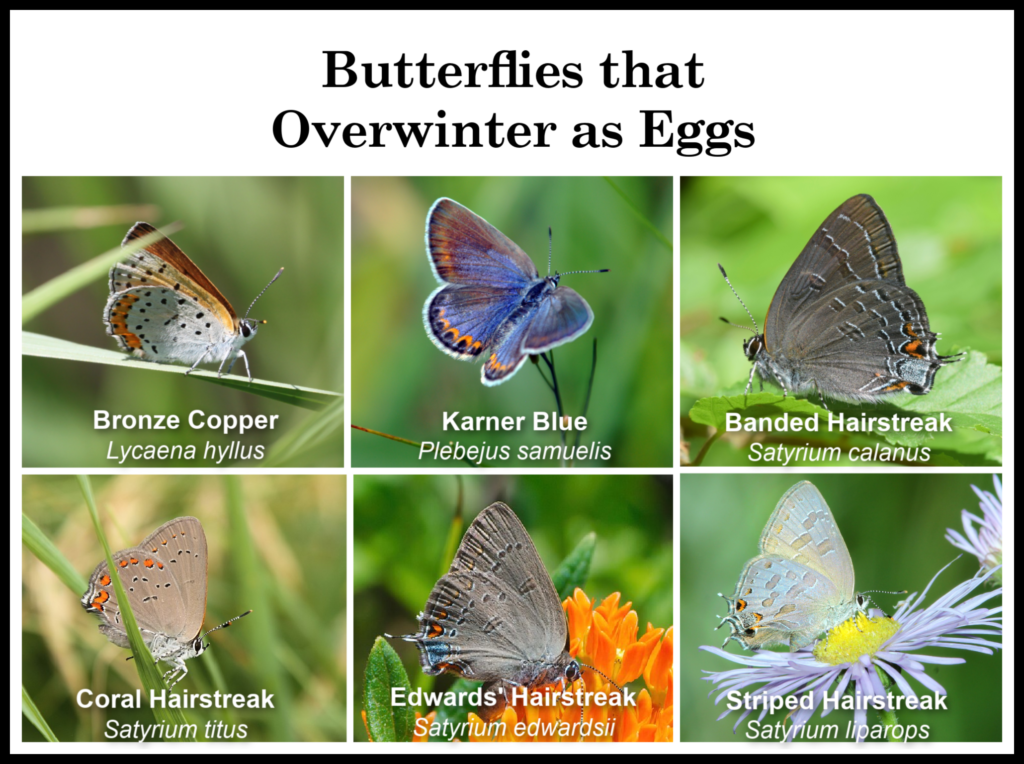
Butterflies that remain in cold-winter areas as adults find safe places to rest, like tucked into crevices, under or in between logs or underneath loose bark on trees and then will enter into diapause. The butterflies shut down all their non-essential systems like reproduction and slow their metabolism dramatically. Special chemicals in their bodies work as anti-freeze, and the butterfly remains dormant until warmer weather arrives. These species, particularly the Mourning Cloak, often can be seen flying on the early days of spring, and occasionally even during warm spells in January or February.
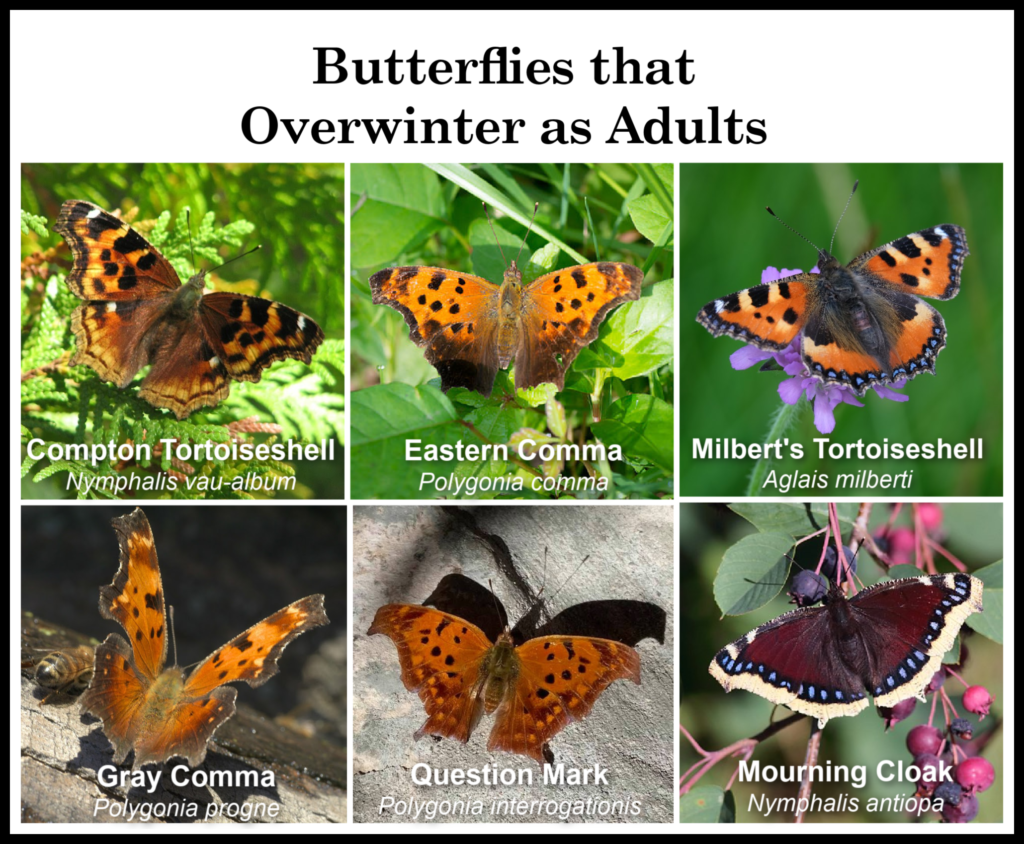
Some butterflies, such as the Monarch butterfly, migrate to warmer climates or travel to overwintering sites. They cannot survive freezing temperatures. Monarchs that overwinter in Mexico and California during the overwintering period (approx. October-March) are usually in reproductive diapause, which means they stop mating and laying eggs.
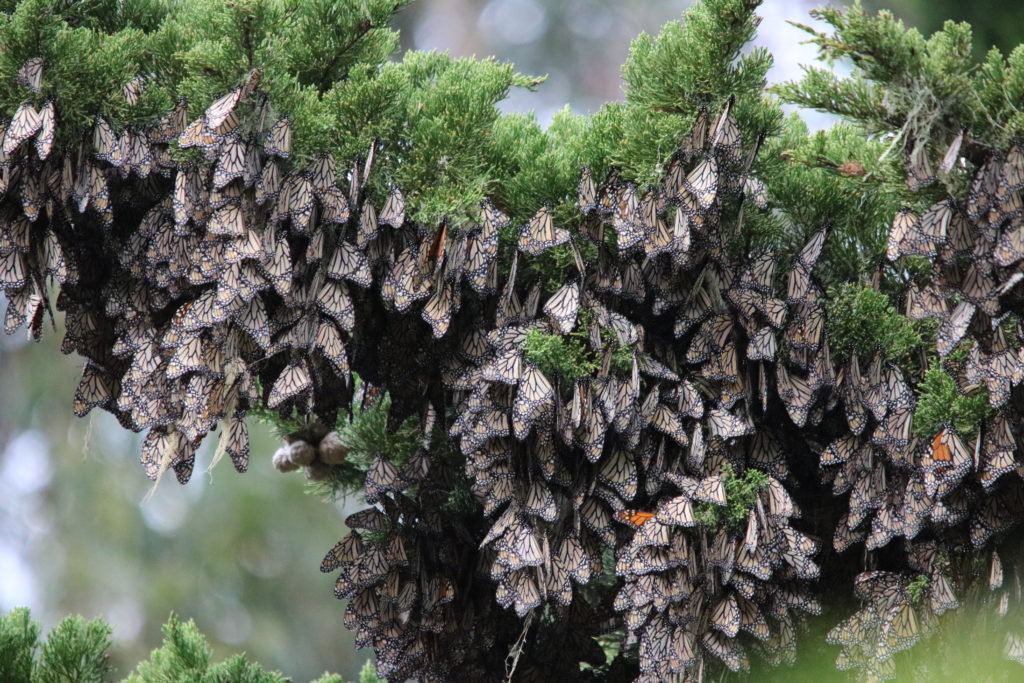
Many other species migrate to warmer climates for the winter and continue their normal lifecycle pairing and laying eggs, during the winter. Their offspring migrate back in the spring. The Painted Lady is known for its migratory behavior here in the United States as well as its epic migration between Europe and Africa.
 You can help a butterfly survive winter, no matter how they do it, with a few simple actions:
You can help a butterfly survive winter, no matter how they do it, with a few simple actions:
Leave the leaves! Leaf litter helps replenish soil nutrients and provides overwintering habitat for a number of beneficial invertebrates. If you can’t leave leaves throughout the yard, consider creating a leaf pile or adding leaves to compost.
Ditch the fall garden cleanup. Besides leaving leaves, consider leaving standing flower and grass stalks in your garden. Sometimes, these stalks harbor chrysalises or pupal cases from local insects like native bees. These areas also provide winter shelter and food for birds. Remove plants in the spring. Generally, by the time the grass needs its first cut in the spring, the pollinators have emerged.
Sow seeds and plan out next year’s garden. Butterflies not only need nectar plants to feed on as adults, but they need host plants for their young caterpillars to feed on as well. Winter is the best time to start planning and preparing your garden for spring and summer butterflies.
